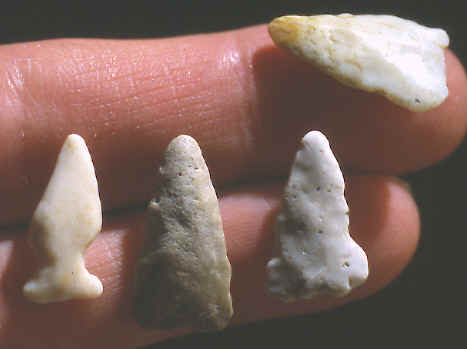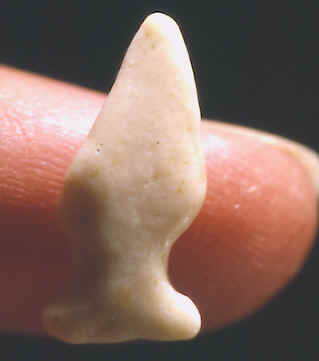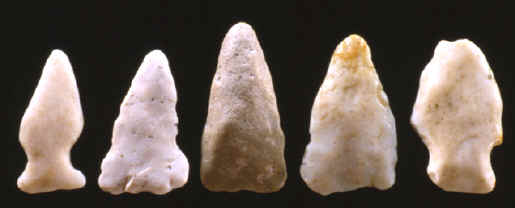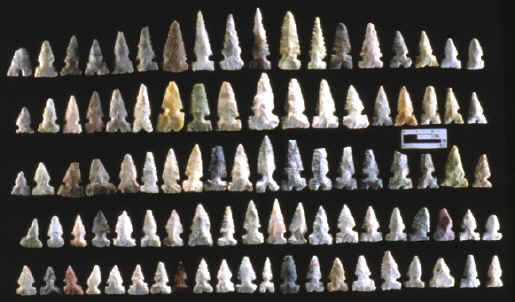|
|
|
All of the "polished" arrow points pictured here were found many years ago on the Cahokia Mounds site by Marvin Wendler and Ed Rouch. They were found on farms that are now part of the Cahokia Mounds Sate Historic Site. Most of them are probably Mississippian culture projectile points but it's possible that one of them could be a Late Woodland point. It's hard to tell since all the flake scars have been removed. "Polished" artifacts are rarely found at Cahokia and when they are they are usually in the form of either discoidals or spatulate celts (spuds), not arrow points. |
|
|
|
|
The majority of all stone artifacts, once they've been discarded, lost or ceremonially placed with burials, begin to go through various kinds of surface changes we call patination. Patina is naturally applied in a great many different ways. One effect is from wind blown sand in a desert. Another is from fast running water in a stream, etc. These surface effects can be extremely slight or so severe that the original artifact type can no longer be identified. A natural phenomenon altered these points which is rather unique. |
|
|
|
|
None of these points were found near running water. So if water didn't polish them the only other logical alternative is from the grinding action of a gizzard, probably a turkeys. There would be no way of knowing when the turkeys used them as gizzard stones. The earliest possibility would be from turkeys raised by the Mississippian people who once lived at Cahokia Mounds. These stones have several different names. They are called gizzard stones, stomach stones and gastroliths. Dinosaurs used gastroliths to grind their food. A half bushel of them up to 4 inches in size was found in one plesiosaur. |
|
|
|
|
I recently heard a story about a woman who worked in a plant that processed turkeys. They raised the birds near the plant in an area where there were Stone Age sites. This woman, after 30 years of working there, had found 32 arrow points amongst the gizzard stones that she would deliberately try to look through. She estimated approximately 80,000 turkeys had gone through her hands. So that would come to about one polished gizzard stone arrow point for every 2,500 turkeys! |
|
|
"REFERENCES" 2000, Turkey Processing Plant Gizzard Stone Story, Larry Kinsella. |
|



